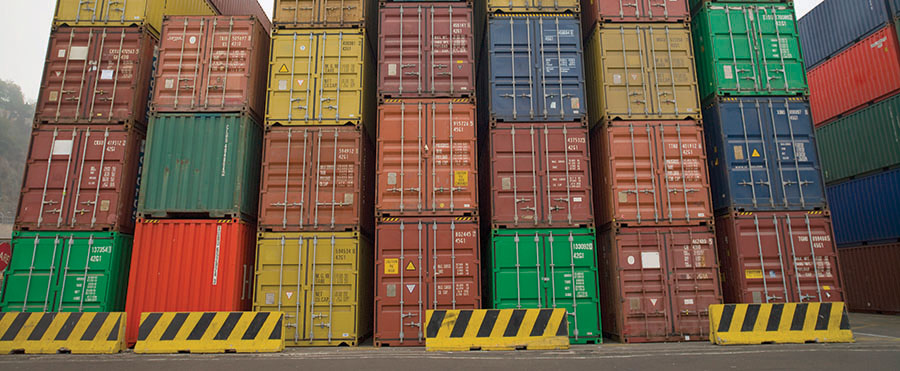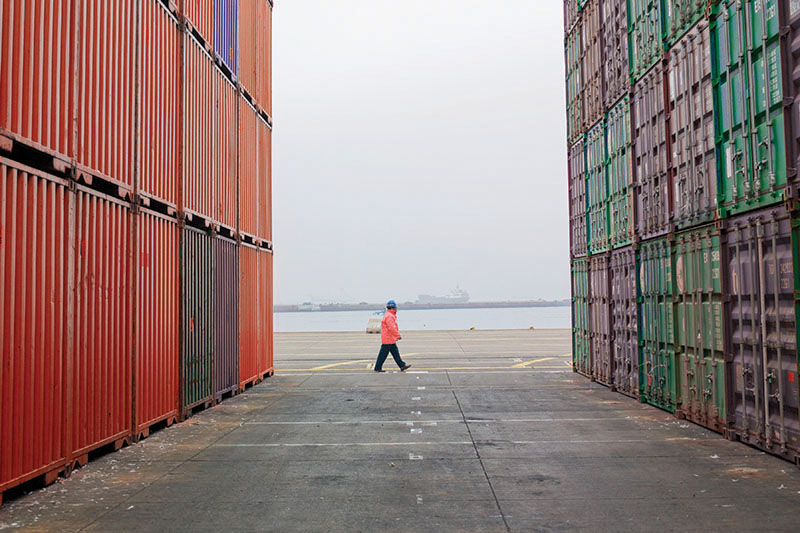2020 Trade Update: More complexities in compliance
Most countries impose legal control on the export of goods from their jurisdictions, while international trade agreements often include additional regulations. However, failing to observe new laws and sanctions can have severe consequences for importers as well.
When the Trump administration announced last month that it had secured a partial deal with Chinese negotiators to push pause on the escalating trade war, our nation’s leading retailers were among the first to praise the move.
“Retailers are encouraged by the progress made between the United States and China and are pleased that the administration has listened to the concerns of the business community as the trade war takes an increasing toll on the American economy,” says David French, senior vice president for government relations of The National Retail Federation.
French adds that the decision to delay planned tariff hikes is welcome, but incomplete news for shippers heading into the busy holiday shopping season. “Although this is a step in the right direction, the uncertainty continues,” French adds. “We urge both sides to stay at the negotiating table with the goal of lifting all tariffs and fundamentally resetting U.S.-China trade relations.”
Global logistics managers in automotive, electronics and agriculture sectors are also seeking regulatory compliance tips as both sides meet to finalize a tentative trade deal, while crafting the precise language of the preliminary phase.
The same goes for the pending revitalized United States-Mexico-Canada Agreement (USMCA), says Amy Magnus, president of the National Customs Brokers and Forwarder’s Association of America, Inc. (NCBFAA). “Importers navigating the entry filing process to meet the requirements of Customs and Border Protection (CBP) and other government agencies has always been challenging,” she says. “We know first-hand just how devastating more tariffs will be up and down the supply chain.”
Regarding the United Kingdom’s planned exit from the European Union (Brexit)—which was still up in the air at press time, Beth Pride, president of BPE Global, an international trade and logistics company, advises caution. “While these international issues are being fine-tuned, shippers should stick to compliance fundamentals and track changes in the Automated Commercial Environment [ACE],” she says.
Back to basics
Irrespective of international trade agreements, Pride believes that shippers should get back to basics. This includes understanding the changing landscape of Incoterms, which is a set of rules defining the responsibilities of sellers and buyers as determined by the International Chamber of Commerce (ICC). “As always, this is essential for shippers to understand the changes that could make an impact on the price they pay for materials and products,” she says.
It’s also essential that shippers have correctly classified their products from both an export and import perspective insists Pride. This includes the Harmonized Tariff Schedule (HTS), the Schedule B and the Export Control Classification Number (ECCN). “Without these, shippers will be exposed to delays and the potential for additional costs,” she says.
And because HTS numbers change frequently, all of the top import classifications should be reviewed to ensure that they are still accurate. “Importers can procure product management solutions that identify when a tariff number is updated, changed or deleted to keep on top of changes to the HTS,” Pride advises.
Finally, shippers should continue to review deliver duty paid (DDP) contracts to plan for possible tariff impacts,” says. Pride. “This is essential to ensure that your DDP suppliers are abiding by the DDP rules and aren’t invoicing you for additional duties when they’re incurred,” she says. “If they’re asking you to pay for the Section tariffs, a different Incoterm should be used.”
Antidumping and countervailing duties alert
Global law firm Baker McKenzie has been warning shippers that U.S. tariffs on steel, aluminum, solar panels, and numerous antidumping and countervailing duty (AD/CVD) orders on finished and raw input products have put exporters in a bind.
On one hand, sourcing and supply chain decisions have become more complex and uncertain. On the other, opportunities have grown for companies in countries that are not subject to certain tariffs or that are able to obtain exclusions from the tariffs. This increased activity in imposing duties also comes with a heightened focus on U.S. import compliance.
According to Kevin O’Brien, a partner at Baker McKenzie, shippers in the Asia-Pacific region should be aware of the scrutiny that covered imports face and, in particular, where a related entity in the U.S. acts as the importer.
Before President Trump’s tariffs were imposed two years ago, the U.S. Government Accountability Office issued a report that assessed the collection of AD/CVD. The report found that $2.3 billion in duties had gone uncollected. A direct result of that report was a heightened focus by CBP on imports subject to AD/CVD orders, with dedicated teams assessing both inadvertent errors or mistakes and material false statements or omissions.
“Customs scrutinizes entries that include products that are or may be covered by AD/CVD orders,” says Christine Streatfeild, also a partner at Baker McKenzie. “Customs may then issue a Customs Form 28 (request for information) and may require a detailed explanation of an importer’s determination on the applicable rate or whether a product is covered by an order. So, if an importer discovers an error, such as its failure to declare a product as covered by AD/CVD, it may be able to disclose and correct the error before Customs notifies it of an investigation.”
However, if Customs has already initiated an investigation, then the importer could face additional penalties that exceed the amount of the duties owed and, in some cases, reach the domestic value of the entry itself.
Under expanded statutory authority, Customs began investigating allegations that importers failed to pay AD/CVD amounts through material false statements or omissions on entry documents pursuant to the Enforce and Protect Act and the Trade Facilitation and Trade Enforcement Act of 2015.
“Meaningful internal controls and routine, periodic assessments of exports subject to AD/CV duties or other trade remedies tariffs sharply reduce the risk of enforcement actions that would otherwise impact a shipper’s supply chain,” says B. Thomas Peele III, a Baker McKenzie partner.
Such compliance programs for trade remedies include schedules to monitor the key times in a year when applicable AD/CVD rates may be subject to change; careful monitoring of product that will be transshipped through multiple countries, when one country is subject to AD/CVD; and assessments of the scope of AD/CVD cases by competent counsel.
Best to bond
Albert Saphir, president of ABS Consulting, prefers to avoid DDP shipments altogether, however, as he believes they entail too many problems and complications. “If the DDP contracts are legitimate all the way, negotiations between seller and buyer are no different than for any other mode of purchase,” he says.
Shippers are also at risk if DDP transactions trigger CBP to conduct a review or investigation into your shipments. This could mean that cargo is opened and physically inspected. If the supplier made any errors on their declarations, Customs can tie those errors to your brand.
Of more critical concern, contends Saphir, is that shippers ensure that the correct Customs bond is in place. “The majority of importers in the United States have continuous bonds with CBP,” he says. “The amount of the bonds are based on the expected annual duty liability toward CBP. Obviously, the various sanction duties now in place can considerably increase the annual duty amount owed to CBP, thus those continued bonds must be increased before CBP finds them insufficient. The importer needs to stay in close contact with their surety to monitor this.”
The recent changes to duty rates are requiring shippers to increase their bond amounts. But without an understanding of how bond amounts are calculated, shippers may not be ensuring the right bond is in place. “The bond amount is based on duty, fees and taxes projected over the next 12 months,” says Saphir. “The key issue is that most shippers might look to the duties paid over the past 12 months and underestimate their required bond for the next 12 months.”
CBP can only look at the past 12 months, so their notices don’t accurately project required bond amounts. Saphir and other consultants say that even if shippers could see further back, the state of trade is in such flux that the past is no longer a good indicator of what’s on the horizon.
If future duty payments are not projected properly, shippers may be forced to buy multiple new bonds as their duty amounts increase. As bond amounts go up the sureties—or guarantors—that issue the bonds may require collateral in order to issue bonds, adding additional cost and time and potentially delaying shipments.

Never enough preparation
When Customs comes knocking be prepared, insist compliance experts. Tom Gould, the former senior director of the Customs and International Trade Law firm at Sandler, Travis & Rosenberg, P.A. is a member of the U.S. Customs and Border Protection’s Trade Support Network. “CBP is seeing a ton of mistakes from shippers,” he says. “Whether you’re trying a new strategy to save on tariffs or are using a tactic you’ve used in the past, you just have to be more aware that CBP is looking more closely than it has before.”
Gould, who also serves on the board of the Foreign Trade Association, currently leads Flexport’s trade advisory services. He recommends that a shipper’s first step is to look at their data under the same light that CBP would, focusing heavily on transactional information, and putting in the necessary compliance procedures.
“Start by building a strategic approach toward the Section tariffs, analyzing the biggest figures and work your way down the list. As you go through the list, ask yourself: What products can you move out of China? Which products would be difficult to move? Which pieces of the supply chain can you partially move?”
Next, says Gould, shippers should make a priority list. “There might be specific products where a piece of machinery may be hard to move, but by understanding the origin rules for their products shippers will be in a better position to determine which part of their supply chain must be altered to change the origin country, thereby avoiding tariffs,” concludes Gould.

Article Topics
Global Trade News & Resources
Supply Chain Stability Index sees ‘Tremendous Improvement’ in 2023 Descartes March Global Shipping Report highlights ongoing steady volume momentum U.S.-bound import growth track remains promising, notes Port Tracker report EU Update 2024: Crises lead to growth Examining the impact of the Taiwan earthquake on global supply chain operations Descartes announces acquisition of OCR Services Inc. Industry experts examine the impact of Baltimore bridge collapse on supply chains More Global TradeLatest in Logistics
LM Podcast Series: Assessing the freight transportation and logistics markets with Tom Nightingale, AFS Logistics Investor expectations continue to influence supply chain decision-making The Next Big Steps in Supply Chain Digitalization Warehouse/DC Automation & Technology: Time to gain a competitive advantage The Ultimate WMS Checklist: Find the Perfect Fit Under-21 driver pilot program a bust with fleets as FMCSA seeks changes Diesel back over $4 a gallon; Mideast tensions, other worries cited More LogisticsAbout the Author
Subscribe to Logistics Management Magazine

Find out what the world's most innovative companies are doing to improve productivity in their plants and distribution centers.
Start your FREE subscription today.
April 2023 Logistics Management

Latest Resources
















